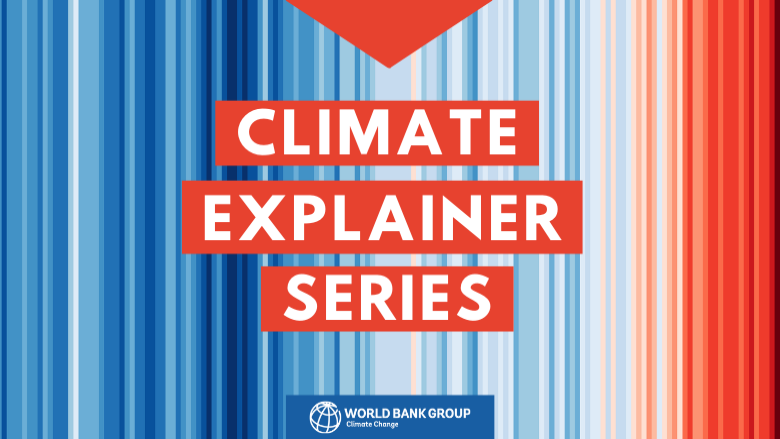The World Bank Group is aligning its financing with the Paris Agreement goals on climate change. This is important, as it keeps us focused on containing the warming of the earth to well below 2 degrees, and preferably 1.5 degrees Celsius, while achieving sustainable development and ending poverty. What does this mean and what will it take to achieve it? We asked Jennifer Sara, Global Director of the World Bank’s Climate Change Group; and Stephane Guimbert, Director of Operations Policy & Country Services to explain.
Briefly, what does “Paris alignment” mean for the Bank Group?
In 2015, countries around the world came together and agreed to a landmark agreement to tackle the climate crisis. The goal of the Paris Agreement itself is to:
- Hold “the increase in the global average temperature to well below 2°C above pre-industrial levels” and pursue efforts “to limit the temperature increase to 1.5°C above pre-industrial levels”;
- To “increase the ability to adapt to the adverse impacts of climate change and foster climate resilience”; and,
- To make “finance flows consistent with a pathway towards low greenhouse gas emissions and climate-resilient development”.
For the Bank Group, the world’s largest lender for development and climate, aligning our financing with the Paris Agreement will mean every investment we make can reduce climate impacts, support low-carbon pathways and help avoid carbon lock in.
Going beyond Paris Alignment, the Bank Group is also taking steps to strengthen our impact. So far, we have only been telling part of the climate story: focusing on how much money we are putting in to fight climate change. We now plan to tell the bigger story that really captures the impacts of our investments. We know that our projects reduce emissions, deliver cleaner air, better water quality, and improved health for people. But just how much of a difference is that climate finance making? How is it contributing to development paths that bring the world to net zero emissions and keep people safe from climate impacts? By tracking this systematically, we are aiming to have impact at scale.
For the Bank Group, the world’s largest lender for development and climate, aligning our financing with the Paris Agreement will mean every investment we make can reduce climate impacts, support low-carbon pathways and help avoid carbon lock in.
When does Paris alignment take effect?
On July 1, 2023, all new operations – that is, projects and other assistance, that go to our Board will be expected to demonstrate how they meet our Paris Alignment commitment. We announced plans for Paris alignment in our Climate Change Action Plan (2021-2025). For the World Bank (IBRD/IDA), 100% of our operations will be aligned from July 1, 2023. For the Bank Group’s private sector arms, International Finance Corporation (IFC) and Multilateral Investment Guarantee Agency (MIGA) 85% of new operations will be aligned starting July 1, 2023, and 100% of operations by July 1, 2025.
Why is the World Bank Group aligning its financing with the Paris Agreement now?
Decades ago, we recognized climate change as a threat to development and began integrating climate considerations into projects and programs. Last year, we delivered a record-breaking $31.7 billion in climate finance to support countries with mitigation and adaptation. In addition to direct climate finance, we have supported efforts to phase out fossil fuels, we have developed new diagnostics to support country-level climate action, and we have issued innovative sustainability bonds.
Aligning our financing with the Paris Agreement marks a key step in creating a world free from poverty on a livable planet.
What will be different when the Bank Group is Paris aligned?
It’s important to see Paris Alignment as an enabling framework. This effort is not just about one-off investments to reduce emissions or boost adaptation; rather it is about countries shifting to more resilient development pathways that avoid locking in a carbon-intensive economy. This approach requires a holistic view of a country’s economy, its long-term development plans, its climate commitments, and potential climate risks. And it will enable us to systematically evaluate our operations and move from greening individual projects toward greening entire economies.
In practice, putting in place this approach means that 100% of our operations will be vetted to manage and reduce climate risks of a project and to demonstrate that our financing supports the lower-carbon options where technically and economically feasible. Simply put: this is climate and development in action.


